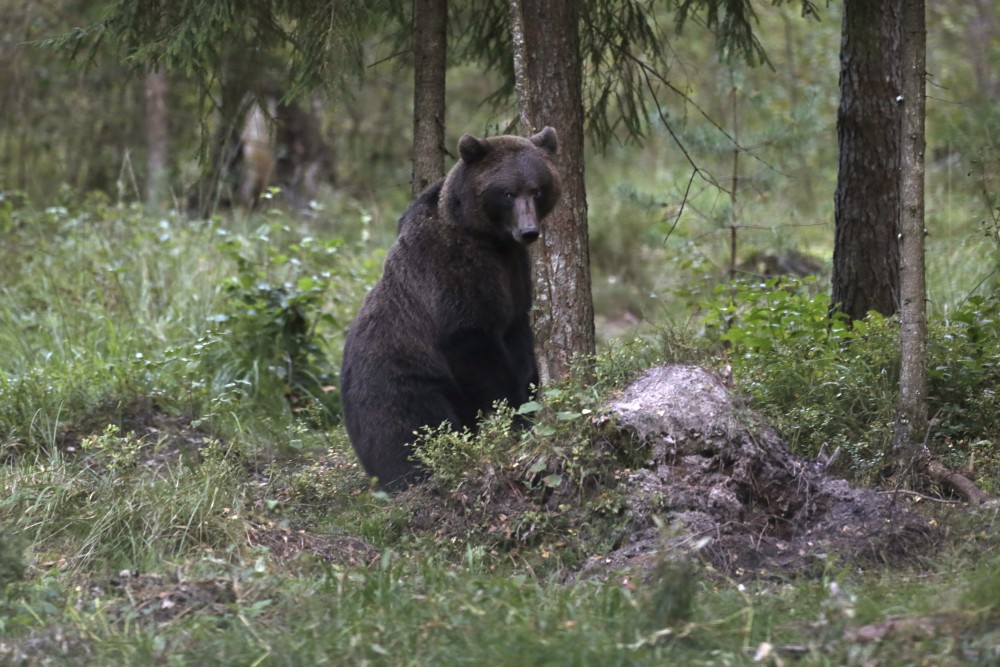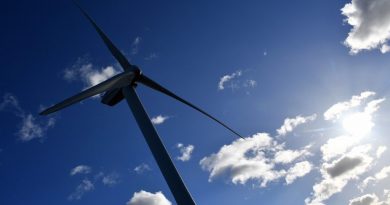Environmental specialists: Proposed border fence will affect Finland’s bear, wolf populations

The proposed construction of a fence along sections of the border with Russia will result in fewer wolves, bears and wild boars entering Finland, according to environmental specialists.
The leaders of all of Finland’s main political parties gave their backing to a proposal by the Finnish Border Guard to build a partial fence along the nation’s eastern border, with work expected to begin next summer.
When completed, the fence will likely cover between 130 and 260 kilometres of the 1,300-kilometre-long border and will be mostly located in the south-eastern corner of the country.
The Border Guard proposed the fence as a means of preventing unauthorised crossings from Russia, arguing that Finland needs to adapt to the changing nature of modern migration, but the barrier will also prevent wildlife from moving freely around the border regions.
“The building of the border fence will result in fewer wolves, bears and wild boars entering Finland from Russia. In addition, the number of red deer coming to Finland will decrease,” according to Riku Lumiaro, a communications expert with the Finnish Environment Institute (SYKE).

Bears, wolves move over large areas
Lumiaro noted that large mammals, such as bears and wolves, can cover distances of up to 50 kilometres a day.
“If water bodies [lakes and rivers] are not fenced, bears, wolves and wild boars will swim across them,” he said.
The Finnish Border Guard is currently studying the impact of the proposed fence on the surrounding ecosystem and how to mitigate any adverse environmental effects.
Fence will impact wild boar population
Wild boar are often evident in southeastern Finland, although they generally live on the Russian side of the border.
“The habitat of the wild boar is quite small. A border fence would have a dramatic impact on local wild boar numbers in areas where a fence would be present,” according to Katja Holmala, a researcher with the Natural Resources Institute Finland (Luke).
Holmala added that construction of the fence would probably result in the formation of local herds of wild boar in the southeast of Finland, living entirely on the Finnish side.
Wild boars can carry African swine fever, which led to a probe in 2019 about the feasibility of building a fence on the border that would prevent the boars crossing over into Finland. However, the idea was abandoned because the results of the study showed that such a fence would not prevent the disease from spreading into Finland.
Fence would be impenetrable for large animals
The Finnish Border Guard has proposed that the fence will be more than three metres high, with barbed wire attached to the top.
Katja Holmala of Luke told Yle she has seen the visual images of the fence and, in her opinion, it will prevent any large mammals from getting over, under or through it.
“The boar is a good digger and the lynx is a good climber. A bear, for example, has also been known to tear up a deer fence,” Holmala said, but added that none of this would be possible with the proposed fence.

Animals learn to adapt
According to Riku Lumiaro of SYKE, animals often learn to adapt to and overcome the prevailing conditions.
“Moose, bears and lynx learn to use the overpasses or underpasses intended for them,” Lumiaro noted, adding that he does not see the eastern border fence as a significant environmental problem.
Luke’s Katja Holmala is however more cautious in her assessment, but broadly agrees with Lumiaro.
“My first thought was a relief that we are not talking about a fence covering the entire eastern border. The impact of the fence on animals should be looked at on a group-by-group basis,” Holmala said.
She added that it is possible to make choices that make the fence less harmful to animals. In northern Finland, for example, reindeer fences kill a lot of forest birds every year because they cannot see the fence and fly straight into it.
“For example, a plastic sign attached to a fence ring helps birds to see the fences better. Such measures, which do not otherwise affect the functionality of the fence, could perhaps also be used for the border fence,” Holmala suggested.
Related stories from around the North:
Canada: Biden, Trudeau agree to ‘safeguard’ caribou calving grounds in Alaska refuge, CBC News
Finland: Finnish Defence Forces to use biofuels on land, at sea, Yle News
Norway: Arctic railway dream fades away as Sami herders signal ‘veto’, The Independent Barents Observer
Russia: Russia plans fenced parks to confine reindeer herding in Arctic, The Independent Barents Observer
Sweden: Road accidents involving wild animals hit record high in Sweden, Radio Sweden
United States: Biden to suspend oil leases in Alaska’s Arctic refuge, The Associated Press



